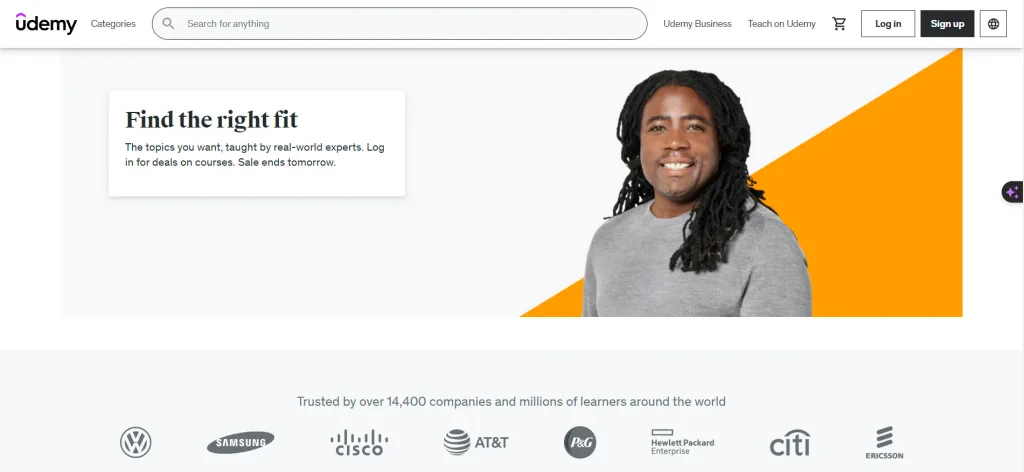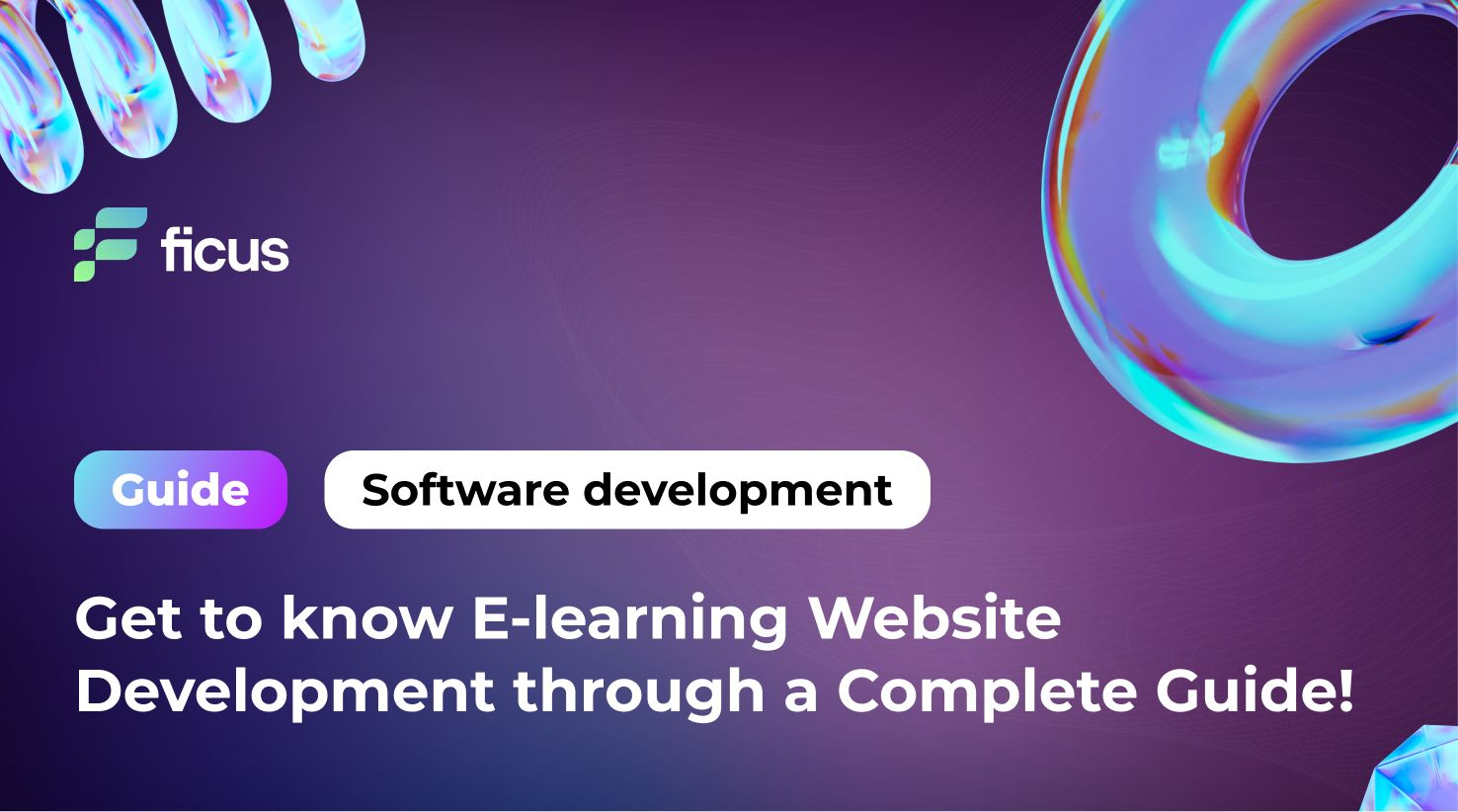E-learning website development is all the rage nowadays. The arrival of COVID-19 further prompted the need for the creation of online learning platforms. You can build an e-learning website by following some basic steps and researching. The conventional means of learning can help up to a certain extent. An e-learning web app goes a long way toward supporting the learning processes of people globally. You may assess the available learning platforms and their features before creating an e-learning website.
- E-learning website development is essential in the digital education era.
- Advantages include flexibility, accessibility, and a growing global audience.
- To succeed, choose a niche, understand your audience, and prioritize user experience.
The practical possibilities need proper evaluation before diving deep into the e-learning website development. Many questions come to mind; Does it make sense to develop an e-learning web app? What are you hoping to accomplish?
Did you know?
According to Statista, the e-learning market is estimated to reach almost 400 billion U.S. dollars worldwide by 2026.
If you’re considering launching an online learning platform, the time is now! The high demand for e-learning solutions in the corporate market contributes to the fast expansion of online education. Rapid professional advancements also boost e-learning website development. Create an e-learning website as it is the demand of today and the future.

What is an e-learning website?
Before getting into e-learning website development, let’s look at e-learning itself. In simple language, e-learning or online learning refers to any learning conducted through digital technology. You create an e-learning website for educating people online. Some examples can be PCs, laptops, tablets, smartphones, or other electronic devices for online learning and education.
- Traditional learning methods bound an individual to a physical location. On the other hand, an e-learning web app lets people from all walks of life get an organized learning experience. Be they students, trainee employees, or casual learners, regardless of their geographical places. So, build an e-learning website without fear of lacking user demand.
Why is it essential to create an e-learning website?
It is vital to build an e-learning website because the world is gradually shifting towards electronic learning methods and systems. The advent of technology has made it compulsory for students and employees alike to adopt the latest learning trends. Some benefits of e-learning website development include the following:
- An e-learning web app offers flexibility, making it easily usable by everyone.
- Build an e-learning website as it offers multiple learning methodologies, enabling access to more people and data.
- e-learning website development reduces geographical barriers and is mostly inexpensive.
Technology is just a tool. In terms of getting the kids working together and motivating them, the teacher is most important.
Bill Gates
What should an e-learning website have?
To create an excellent e-learning web app, it should have many adequately designed and implemented features. With better awareness in today’s world, e-learning website development was never that easy before.
Registration and sign-in
Building an e-learning website with a quick and easy-to-use registration process attracts more users. To use an online learning platform, the individuals visiting the website must provide personal information to register an account. Providing an email address or social network account can do the trick amply.
- The existence of Google, Facebook, Twitter, or other accounts can work well for registration purposes on an online learning platform.
- Build an e-learning website that may even offer courses to minors under 18. Then the information collected relates to the residence, city, zip code, school, study level, etc. The aim is to ensure regular payments.
Authentication and user profiles
No e-learning website development is complete without incorporating the essential stages of authentication and proper setting up of user profiles. The authentication procedure involves the usage of a name or ID of a user. Moreover, a password or public certificates are also required to join an online learning platform.
- The user profile is typically kept straightforward, and you only need to include the general information entered during the registration procedure to become a valid user.
- To build an e-learning website that functions seamlessly, always allow tutors and users to edit their profile information.
Filtered search instruments
When you build an e-learning website, a proper setup should be where users can conduct searches using keywords or subjects. This e-learning website development will prove a practical endeavor.
To create an e-learning website for online students, you need to consider multiple factors. To find a new tutor, the search may include a questionnaire. Build an e-learning website that uses a questionnaire to quickly identify the ideal teacher for the user.
An example is Preply. A questionnaire may include the following details:
- Time zone
- User’s education grade
- Teacher’s Title
- Teacher’s summary
Additionally, the search page of an e-learning web app should have a sorting system. But this is not always the case.
Video Calling function
When you create an e-learning website, keep your target audience in mind. More than messages are needed as a communication means between teachers and students, and Videoconferencing is the central theme here. If you intend to build an e-learning website, your online marketplace should include a video functionality setup.
When schools and universities across the globe closed, videoconferencing applications provided the perfect source of bridging the gap between teachers and students online, such as Zoom, Google Classroom, and Skype. So, create an e-learning website with confidence.
Zoom is the most popular tool available in an e-learning web app. Even a study supports the productive impact of Zoom on students during the learning phase. About 40% of students said yes to Zoom impacting their online learning in the best possible way.
Dashboard creation
In an e-learning website development process, a dashboard is an essential component. The dashboard brings together teachers, students, and administrators. When you create an e-learning website, this central panel provides information about online courses, student performance status, and instructor ratings.
- It gives convenience to both users and tutors. Monitoring the student’s progress and the number of classes completed becomes easy in an e-learning web app.
- Even instructors can check their arranged classes and withdraw earned monies through the dashboard creation in the e-learning website development process.
Payment options
To create an e-learning website that deals with paid online tutoring, clear payment options should be included in the online market platform. To build an e-learning website, you have to offer multiple payment choices. The most secure payment options work best for successfully running such a setup. Some commonly practiced options include Debit/ Credit cards and Paypal in e-learning website development.
Feedback and Rating System
A perfect e-learning web app should include ratings and feedback options. When you create an e-learning website, ratings and feedback give your platform a trustworthy appearance. It is, therefore, beneficial in e-learning website development to have rating and feedback sections on multiple online pages. Build an e-learning website with pages like the tutor page, the homepage, and the payment page.
Editing-enabled tools
Any e-learning website development is incomplete if a particular editing feature is not added. When you create an e-learning website, you include a course page. Typically a course page includes details on the instructor and course materials. Build an e-learning website where Instructors may revise and edit a course’s content to improve its structure.
Gamification elements
Gamification in e-learning web app development increases the performance and effectiveness of online courses. You create an e-learning website with a fun element added to learning, which makes e-learning website development more engaging to users.
Admin panel
An admin panel goes a long way for proper e-learning website development. It is standard tool administrators use to create e-learning websites to manage content in the shape of notifications, courses, and complaints, among other things. Build an e-learning website with thorough research about admin panel creation.
Looking for developers to create your custom e-learning platform?
Contact usHow do you build an e-learning website?
To create an e-learning website that is a precious e-learning platform, you must incorporate features that solve your consumers’ issues. E-learning website development starts from scratch, the ideology, moves through different stages, and it is ultimately producing a fully-functioning online learning platform.
- Decide Your Niche
Determining a niche is vital to give the best results when you create an e-learning website. To build an e-learning website of the highest standard, you should know your specialization. The question arises; what courses do you intend to provide? Through e-learning website development, are you willing to offer a variety of topics, including personal development, health, and fitness, as well as computers and technologies? Or do you intend to develop a market for industry-specific education? To create an e-learning website, ideally, determine what you wish to begin with.
- Study Your Intended Audience
Reaching your target audience is directly linked to the success of your online learning platform. To create e-learning website, investigate and identify your intended audience, whether they are students or employees, or someone else. Create an e-learning website after considering issues such as who will be interested in your e-learning website. Build an e-learning website after considering how old are your prospective users. So on. And appropriately provide them with tailored content.
- Recognize Your Competitors
A successful e-learning website development process involves identifying your rivals. The competitors in your online learning market. To create an e-learning website, the key is to observe what they’re doing well and where they’re going wrong for learning purposes. Thus, you will discover what to do and what not to do to thrive in the e-learning market.
- Efficient UX/UI Design
When you create e-learning website, much depends on the looks and usability of your e-learning space. During e-learning website development, ensure interface elements are easy to access and stick to a simple page layout. Using soft tones and carefully placing all website elements also helps tremendously. When you create an e-learning website, users shouldn’t be distracted by unnecessary details. Thus, build an e-learning website with a proper thought process.
- Use the best technology
To create an e-learning website, do consider that the technical stack of your e-learning website can make or break it. Therefore, you must choose the appropriate ones. Look for the most advanced, cutting-edge programming languages and tools for your e-learning website development. Then, build an e-learning websites and incorporate them practically.
- Select the Development Method
E-learning website development can be done through primarily two possibilities. You can either develop your web app from scratch, i.e., custom development, or utilize one of the readily available website solutions on the market.
Is e-learning a Profitable Business?
Building an online learning market is profitable or not in the long run. That’s the question here. But there are vast business opportunities here. Several factors conspire together to make e-learning website development profitable.
- You create an e-learning website with an ever-increasing target audience in mind, which ensures an excellent yield. Through e-learning website development, students can take online courses, saving time and money. Likewise, a firm’s employees raise their skills and knowledge through online learning. So, a firm target market is readily available to build an e-learning website.
- E-learning website development requires little funding. You may need financial resources for website hosting, but no other expense.
- The reward is greater than the risk of e-learning website development. An efficient platform and promotional marketing let you quickly reach more users. You get better profits and a minimum risk factor when you create an e-learning website with less labor and cost.
What is the Best e-learning Website?
That’s a tricky question, as many options are in e-learning website development. What do you think is the best e-learning website? To create an e-learning website of the best quality, you should search this question.
Here is a list of the seven effective online learning platforms of 2022 employing e-learning website development.
Coursera – is an overall winner.

Udemy – ideal for niche topics.

Skillshare – best for creative fields.

MasterClass – best for celebrity Instruction

EdX-Perfect for STEM.

Pluralsight – data learning best site.

Parting Thoughts Build e-learning
There is an endless race to be the best at what you do, i.e., to create an e-learning website. All are rushing towards e-learning platforms to change their fates for the long term. E-learning website development, if done professionally, will produce instant results in terms of profit and users. To build an e-learning website that stands out from the other market competitors, embrace the latest trends and technology. Build an e-learning website by adding various features and an eye-pleasing, convenient background. Success will surely come.
When developing an e-learning website, it’s crucial to prioritize features such as user-friendly interfaces, responsive design for mobile devices, secure user authentication, content management systems for course creation, progress tracking, and interactive learning tools like quizzes and forums. Additionally, integrating video conferencing and collaboration tools, ensuring content accessibility, and implementing analytics for monitoring user engagement are essential for a successful e-learning platform.
E-learning websites often leverage technologies like HTML5, CSS, and JavaScript for responsive and interactive design. Backend development may involve languages like PHP, Ruby on Rails, or Node.js, along with databases like MySQL or MongoDB. Learning Management System (LMS) frameworks like Moodle or open-source platforms like edX and WordPress with LMS plugins are popular choices. Cloud hosting services, content delivery networks (CDNs), and video streaming platforms are also commonly used to ensure scalability and performance.









As someone who is embarking on my journey in development, the article has been a game-changer for me. The author’s comprehensive guide provided me with a solid understanding of e-learning website development. The article’s organization and clarity made it accessible even for beginners like me. I highly appreciate the author’s effort in crafting such a beginner-friendly resource that serves as an excellent starting point for e-learning website development.
As a seasoned professional in the field of development, I was pleasantly surprised by the article. The author’s expertise shines through in their comprehensive coverage of e-learning website development. The guide not only covers the technical aspects but also delves into the strategic considerations and best practices, making it a valuable resource for both beginners and experienced developers.